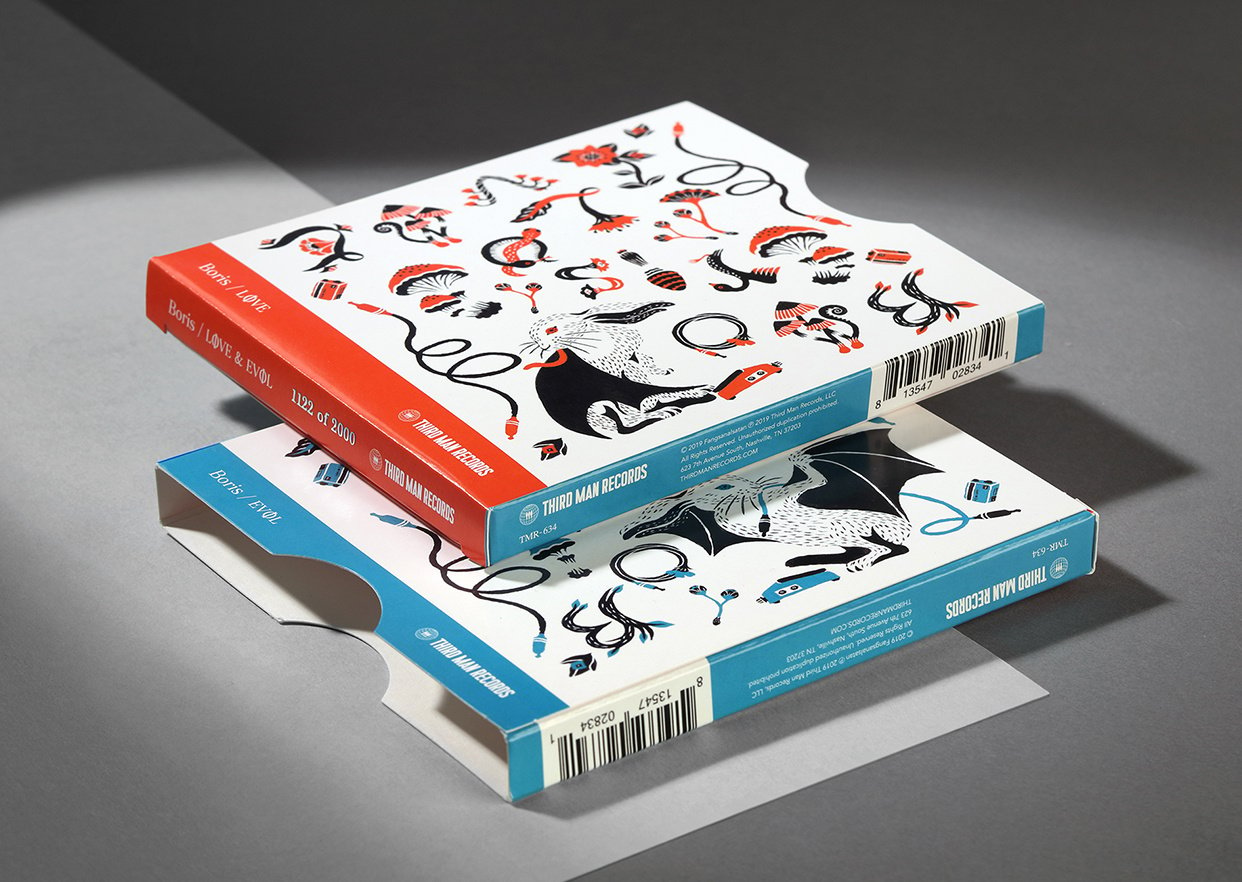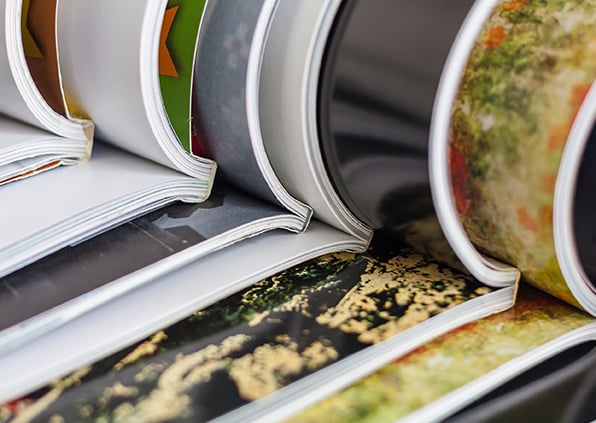This variety reveals the complexity involved in modern print production – and the things you need to know when purchasing print services. In the coming weeks, we will explore the "4 P's of Printing" and explain how each of them factors into your print procurement decisions:
- Paper
- Processes
- Presses
- Products
First up, we take a look at printing paper and summarize some of the key differences in the types of paper used by commercial printing companies.
.jpg?width=1455&height=626&name=Blog%20Body%20Image%20Collage%20%E2%80%93%20Print%20101%20Series%20(1).jpg)
Printing Papers Compared
When it comes to commercial printing, there’s a nearly endless range of paper options to choose from. Each type of paper offers advantages or performance characteristics that would make it a perfect choice for certain printing projects and a poor choice for others. Plus, the paper industry has terminology and specifications all its own that extend far beyond the scope of a single blog post. You could spend your entire career working for a paper mill and still learn something new each day. In general terms, however, these are the key distinctions you need to know.
Uncoated paper stock
Uncoated paper has a simple, natural feel and texture to it. The primary advantage of this type of paper is its ability to absorb ink. This performance characteristic makes uncoated paper perfect for projects that require easy handling such as:
- Books
- Business cards
- Business communications (e.g., direct mail letters)
- Documents that require signatures or will be written upon later
There is also a unique aesthetic to consider. Uncoated paper stock is often used for applications where there is a concern about the finished piece appearing too “slick” or expensive. Printed items created on uncoated paper naturally have a more relaxed vibe, which may be exactly the brand impression you wish to make.
Coated paper stock
Coated paper is exactly what it sounds like – it has a coating applied to it that makes the surface smoother and more even. The resulting “polished” surface means that coated paper does not absorb ink as readily as uncoated paper. This, in turn, makes coated paper ideal for printing highly-detailed images and graphics such as:
- Magazines and catalogs
- Photographs
- Posters
- Wall calendars
If the finish detail is so good, why not simply use coated paper for everything? The primary reason is price. Coated paper stock is generally more expensive than uncoated paper. Thus, you will need to consider if the performance characteristics of coated stock are worth the extra cost.
Paper grades and weights
Printing paper comes in a variety of grades and weights based on the physical characteristics of the paper stock. These grades and weights signal which types of applications are best suited to each paper stock:
- Paper grades normally range from A to F, with A being the highest quality. The grade indicates how the paper looks and feels, as well as its thickness and weight.
- Paper weight is measured in pounds corresponding to the weight of 500 sheets of that paper, each cut to the standard size for that type of paper.
The thickness and weight of paper, in turn, influence print quality, ink absorption and other performance characteristics. For example:
- Bond paper is typically used for letterhead and stationery because of its smooth finish and high opacity.
- Cover paper is more rigid, making it ideal for things like book covers and postcards.
- Paperboard is the heaviest and stiffest of the paper grades, making it the paper of choice for things like folded cartons.
Paper textures
The surface texture of paper is another consideration as it has a significant impact on the look and feel of your printed project. The choice is usually based on a combination of personal preference and practicality. Some common textures include smooth, laid, linen, eggshell and felt.
- Smooth paper (also known as wove) is used for printing high-quality images with fine details.
- Laid paper has evenly spaced lines running across its surface. It’s commonly used for stationery products and business cards.
- Linen paper is similar to laid but has a woven texture that makes it feel luxurious to the touch. It is also frequently used for business stationery items.
- Eggshell paper, when examined up close, has tiny peaks and valleys on the surface similar to the surface of an eggshell.
- Felt paper has a soft surface that resembles wool fabric. This gives printed images a softer look and also imparts a “rustic” aesthetic sought after for certain types of projects.
The Best Paper for Commercial Printing
Choosing paper for a commercial printing project can get confusing, particularly because there is not a universal “best” choice per se. Rather, it’s all about weighing the performance characteristics and prices of the different paper stocks available and selecting the option that best fits the printed piece. Becoming familiar with the distinctions above will make it easier for you to communicate with a printer or supplier, ensuring that the right paper stock is selected for your project and the type of printing press technology being used.
Printing Blog Series Continues
Our exploration of the 4 P’s of Printing continues in a few weeks. Next time, we will focus on the different printing processes used and how ink colors – when put on paper – work together to create the printed image interpreted by the human eye. .jpg?width=1455&height=626&name=Blog%20Body%20Image%20%E2%80%93%20Print%20101%20Series%20(1).jpg)
Taylor: Sourcing Savvy in Action
As one of the largest graphic communications companies in North America, Taylor is a leading provider of commercial print services, corporate identity products, packaging and labeling, direct mail programs and more. This gives us enormous sourcing clout in the paper marketplace. We work directly with the world’s largest paper mills to maintain a ready supply of the countless varieties of paper needed.
This sourcing expertise served us well during the supply chain shocks triggered by the COVID-19 pandemic. While many of our competitors struggled to obtain the paper needed to deliver projects on time, Taylor was able to get customers the printed items they needed, when they needed them.
To learn more about Taylor’s sourcing expertise in the global paper market, please contact one of our print experts.
.jpg?width=1200&height=600&name=Blog%20Hero%20Image%20%E2%80%93%20Taylor%20Blog%20%E2%80%93%20Print%20101%20Series%20(1).jpg)



.jpg)


.jpg)


